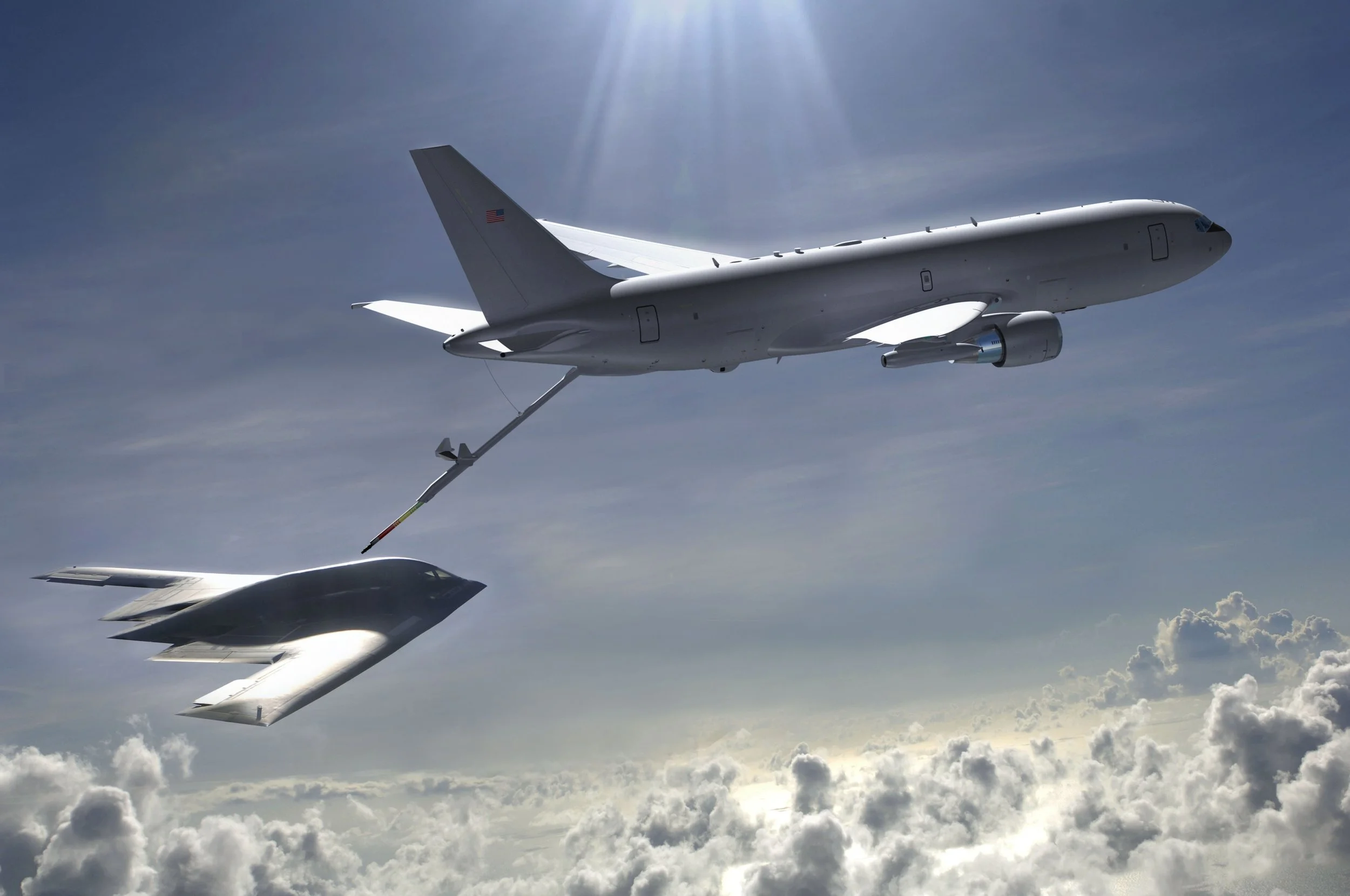Boeing’s brand new KC-46 refueling tanker, better known as Pegasus, has entered its final stages of testing. The military aircraft is a much-anticipated upgrade to the Air Force's current refueling planes, KC-135 Stratotankers built in the 1950s. Getting the mighty Pegasus to market hasn’t been without hiccups, but it appears the wait may soon be over.
Under the cloak of darkness
What makes Pegasus so special? It’s totally nocturnal. Unlike tankers of the past, which switched on bright incandescent floodlights when refueling at night, this plane can gas up a jet mid-air in pitch-black skies. Military aviation experts had their doubts a lights-off refueling was even possible. Then, last December, Air Force test pilots donning night-vision goggles hopped aboard a KC-46 and refueled a cargo plane in complete darkness.
Nocturnal refueling is possible thanks to HD cameras and infrared lights fitted throughout the tanker. This technology is completely invisible to the naked eye, making Pegasus the stealthiest tanker ever created.
Carrying 32,000 gallons of fuel the tanker is efficient as well, pumping 1,200 gallons into and Air Force jet per minute. As CNN’s Jon Ostrower points out, that’s “enough to fill a passenger car in less than a second.”
Among Pegasus’ other features is its ability to switch roles quickly to accommodate different missions. In addition to refueling, it can carry cargo and act as an air ambulance transporting medical patients out of warzones. The KC-46 can also refuel two aircraft simultaneously by extending drogues from each wing.
The Boeing multi-purpose tanker, the KC-46A Pegasus, performed its first ever aerial refueling January 24th, 2016 on a U.S. Air Force F-16 fighter.
Moving forward, despite turbulence
Impressive as Pegasus is, getting the tanker to market hasn’t exactly been a smooth ride. The project has encountered several delays and budget overruns since production began in 2013. Originally scheduled for Spring 2017, delivery of the first tankers to the US Air Force was first pushed back to August, then December, and is now not expected until June 2018.
Boeing’s contract with the US government was for a fixed price of $4.9 billion, but issues with the plane’s wiring and its drogue refueling system have forced the manufacturer to write off $2 billion of that paycheck. However, even with these short-term budget issues, Pegasus is still expected to be a highly lucrative program for Boeing, worth more than $40 billion.
Passing the necessary certifications has proven to be another obstacle for Pegasus, although one Boeing is determined to get through. The tanker is currently undergoing Federal Aviation Administration certification and completing the required test flights. As of May 2017, officials said the testing and certification process was 65 percent complete.
Situated in Arlington, Washington, just 20 minutes from Boeing’s Everett factory, we’ve been providing metal fabrication to the aerospace industry for more than a century.
Read more about our capabilities.
Banner image: A KC-46 conducts in-flight refueling on a B-2 bomber in this illustration. Air Force illustration via wpafb.af.mil

